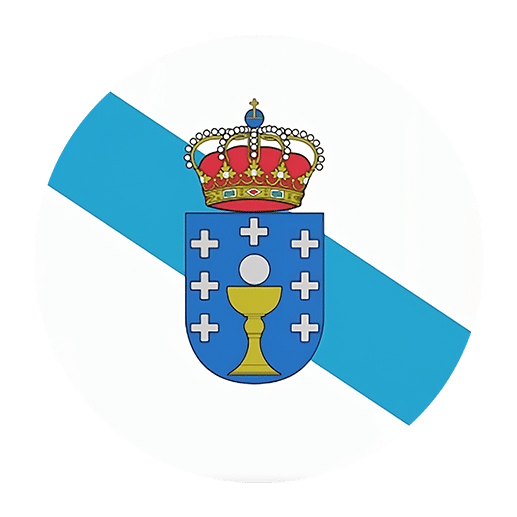Teaching a new language to young learners is a rewarding but challenging endeavor. When it comes to Galician—a Romance language spoken in the Galicia region of Spain—the task may seem daunting due to its limited global exposure compared to languages like Spanish or French. However, with the right strategies and resources, teaching Galician to young learners can be both effective and enjoyable. This article will guide you through the process, providing comprehensive methods, activities, and tips to engage young minds in learning Galician.
Understanding the Basics of Galician
Before diving into teaching methods, it is essential to understand the fundamental aspects of the Galician language. Galician, or Galego, shares similarities with both Portuguese and Spanish, making it a unique blend of both. It uses the Latin alphabet and has its own set of phonetic, grammatical, and syntactical rules.
Phonetics and Pronunciation
A strong foundation in pronunciation is crucial for young learners. Galician phonetics might be challenging initially, but with consistent practice, children can master them. Focus on the following key points:
1. **Vowel Sounds**: Galician has five vowel sounds similar to Spanish: /a/, /e/, /i/, /o/, and /u/. Ensure that students can differentiate and pronounce these sounds clearly.
2. **Consonant Sounds**: Pay attention to consonants that differ from English, such as the soft ‘g’ and ‘j’, which sound like the English ‘h’.
3. **Stress and Intonation**: Stress typically falls on the second-to-last syllable, but exceptions exist. Intonation patterns can also differ, so practicing with native speakers or audio recordings can be beneficial.
Creating an Engaging Learning Environment
Children are naturally curious and energetic, making it essential to create an engaging and dynamic learning environment. Here are some effective strategies:
Interactive Activities
1. **Songs and Rhymes**: Music is a powerful tool for language learning. Incorporate traditional Galician songs and rhymes to help children grasp pronunciation and rhythm.
2. **Games**: Use language games such as Bingo, Memory, or Pictionary with Galician vocabulary. This makes learning fun and helps reinforce new words.
3. **Storytelling**: Narrate simple stories in Galician. Use props, puppets, or illustrations to make the stories more engaging and comprehensible.
Visual Aids
Visual aids are particularly effective for young learners. Use flashcards, posters, and picture books to introduce new words and concepts. Visual aids help children associate words with images, making it easier to remember vocabulary.
Technology Integration
Incorporate technology to make learning more interactive. Use educational apps, online games, and videos in Galician. Virtual reality experiences can also immerse students in the Galician culture and language.
Curriculum Design and Lesson Planning
A well-structured curriculum is the backbone of effective language teaching. Here’s how to design and implement a curriculum for teaching Galician to young learners:
Setting Clear Objectives
Define clear, achievable objectives for each lesson. Objectives should be specific, measurable, attainable, relevant, and time-bound (SMART). For example, an objective might be: “By the end of this lesson, students will be able to greet each other in Galician.”
Building Vocabulary
Start with basic vocabulary and gradually introduce more complex words. Focus on everyday vocabulary that children can easily relate to, such as:
1. **Greetings**: Ola (Hello), Adeus (Goodbye)
2. **Numbers**: Un (One), Dous (Two), Tres (Three)
3. **Colors**: Vermello (Red), Azul (Blue), Verde (Green)
4. **Animals**: Gato (Cat), Can (Dog), Pato (Duck)
Grammar and Sentence Structure
Introduce grammatical concepts gradually. Start with simple sentence structures and basic grammar rules, such as:
1. **Subject-Verb Agreement**: Teach how subjects and verbs agree in number and person.
2. **Simple Present Tense**: Focus on forming and using the simple present tense.
3. **Basic Questions**: Teach how to form and answer basic questions.
Use plenty of examples and practice exercises to reinforce these concepts.
Incorporating Cultural Elements
Language and culture are deeply intertwined. Incorporate cultural elements into your lessons to provide context and make learning more meaningful. This could include:
1. **Festivals**: Teach about Galician festivals such as the Festa de San Xoán or the Romaría Vikinga.
2. **Cuisine**: Introduce traditional Galician foods like pulpo a la gallega (Galician-style octopus) and empanada.
3. **Folklore**: Share Galician myths, legends, and folktales.
Assessment and Feedback
Regular assessment and feedback are crucial for tracking progress and identifying areas for improvement.
Formative Assessments
Use formative assessments to monitor student progress during the learning process. These can include:
1. **Quizzes**: Short quizzes on vocabulary and grammar.
2. **Oral Assessments**: Simple conversations or oral presentations in Galician.
3. **Class Participation**: Observe and evaluate student participation in class activities.
Summative Assessments
Summative assessments evaluate student learning at the end of a unit or term. These can include:
1. **Written Tests**: Comprehensive tests covering vocabulary, grammar, and sentence structure.
2. **Projects**: Assign projects that require students to use Galician creatively, such as writing a short story or creating a poster.
Providing Constructive Feedback
Provide constructive feedback to help students improve. Highlight their strengths and offer specific suggestions for areas of improvement. Encourage a growth mindset by emphasizing effort and progress.
Parental Involvement
Parental involvement can significantly enhance language learning. Encourage parents to participate in their child’s language learning journey by:
1. **Creating a Language-Rich Environment**: Encourage parents to use Galician at home, even if it’s just simple phrases and greetings.
2. **Reading Together**: Suggest Galician children’s books for parents and children to read together.
3. **Cultural Activities**: Encourage families to participate in Galician cultural activities, such as festivals or cooking traditional dishes.
Resources for Teaching Galician
Utilizing a variety of resources can make teaching Galician more effective and engaging.
Textbooks and Workbooks
There are several textbooks and workbooks available for teaching Galician. Choose age-appropriate materials that align with your curriculum goals. Some recommended resources include:
1. **”Gallego para niños”**: A comprehensive textbook designed specifically for young learners.
2. **”Vamos a aprender gallego”**: A workbook with exercises and activities for practicing Galician.
Online Resources
There are numerous online resources for teaching and learning Galician. Some useful websites and platforms include:
1. **Duolingo**: Offers a Galician course with interactive lessons and exercises.
2. **Galician Council of Culture**: Provides educational materials and resources for teaching Galician.
3. **YouTube**: There are several channels with Galician language lessons and cultural content.
Local Resources
If you are teaching in or near Galicia, take advantage of local resources:
1. **Language Schools**: Many language schools in Galicia offer courses and materials for teaching Galician.
2. **Cultural Centers**: Visit local cultural centers or museums to learn more about Galician history and culture.
3. **Community Events**: Participate in community events and festivals to immerse students in the language and culture.
Challenges and Solutions
Teaching Galician to young learners may come with challenges. Here are some common challenges and solutions:
Limited Exposure
Challenge: Limited exposure to Galician outside the classroom can make it difficult for students to practice and retain what they’ve learned.
Solution: Create opportunities for students to use Galician in real-life situations. Organize language exchange programs or pen pal partnerships with children in Galicia. Encourage students to watch Galician TV shows or listen to Galician music.
Language Interference
Challenge: Students may mix up Galician with other languages they are learning, such as Spanish or Portuguese.
Solution: Clearly differentiate between languages in your teaching. Use visual aids and color-coding to highlight differences in vocabulary and grammar. Practice code-switching exercises to help students switch between languages smoothly.
Motivation
Challenge: Maintaining student motivation can be challenging, especially if they don’t see an immediate need for learning Galician.
Solution: Keep lessons fun and engaging by incorporating games, songs, and interactive activities. Show students the practical benefits of learning Galician, such as the ability to communicate with Galician speakers or understand Galician culture.
Conclusion
Teaching Galician to young learners is a fulfilling and impactful endeavor. By creating an engaging learning environment, designing a structured curriculum, incorporating cultural elements, and utilizing a variety of resources, you can make the process enjoyable and effective. Remember to assess progress regularly, provide constructive feedback, and involve parents in the learning journey. Despite the challenges, the rewards of teaching Galician are immense, as you help young learners connect with a rich linguistic and cultural heritage.

